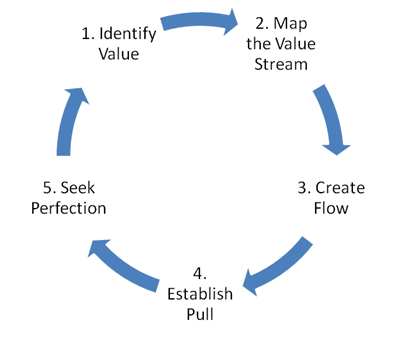Today, I want to discuss another widely-used technique to improve productivity. This idea is called lean production, lean manufacturing, lean methodologies, lean enterprise, or even just “Lean.”
Lean often refers to improving manufacturing processes’ efficiency, but Lean is more than that. Its philosophy is about eliminating waste in all forms to make a process or business the best it can be. It also requires that the practitioners of Lean recognize that there is always room for improvement.
History of Lean Production
Lean, in its earliest form, comes from the Japanese manufacturing industry. However, its name was coined by John Krafcik, a former engineer at Toyota and master’s student at MIT in 1988. Although the general idea is about reducing waste to maximize productivity, it isn’t about cutting out employee breaks and shortening the lunch hour. It is about taking out things that do not add value in some way.
Categories of Lean Production
The three main categories of waste in the Lean methodology are
- “muda” (work that does not add value)
- “muri” (overburden), and
- “mura” (unevenness).
Work without value and overburden are straightforward enough, but unevenness is essentially the absence of smoothness and flow in work processes. Unevenness is present when, for instance, ordering a raw material has a long lead time, and nothing can be done between the time it was ordered and when it arrives.
One can eliminating unevenness by anticipating the need for the raw materials beforehand and placing an order ahead of time.
Reducing Waste with Lean Production
In addition to eliminating waste, Lean emphasizes improving quality of the process/results. This means that if Lean is implemented successfully, better results should be attained with less effort/resources.

Unfortunately, Lean does not come with an exact set of instructions. The methodology requires its practitioners to be creative in order to make their process more efficient and less wasteful. Its guiding principles are what should drive every company, as it simply demands that your process/result becomes better.
As a productivity method, however, it should be accompanied by another method that focuses more on the day-to-day time management, as opposed to the long-term success that Lean works best at.
For more information on Lean, go to their official website at lean.org.
To get Lean with Priority Matrix, enter your email to start a free trial. The software is built to enable your team to work more effectively while reducing “waste”, whether in the form of minutes of manpower.
Get started:
Learn more about Priority Matrix for Windows, iPhone, iPad, and Mac.
